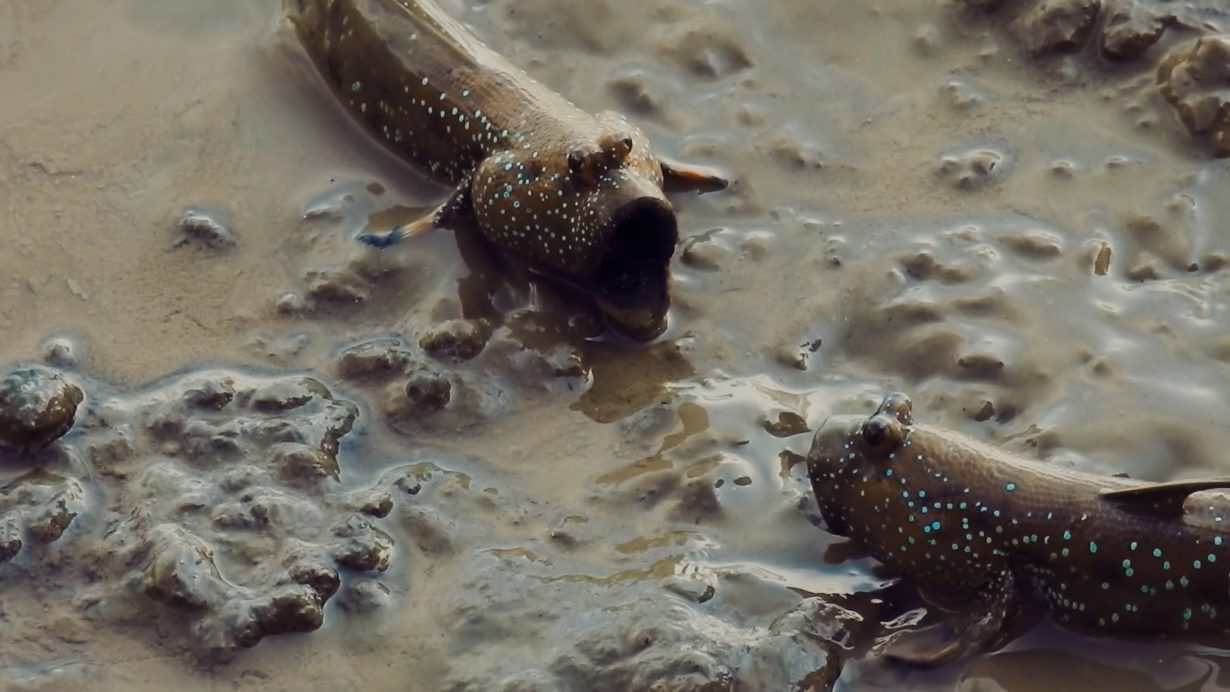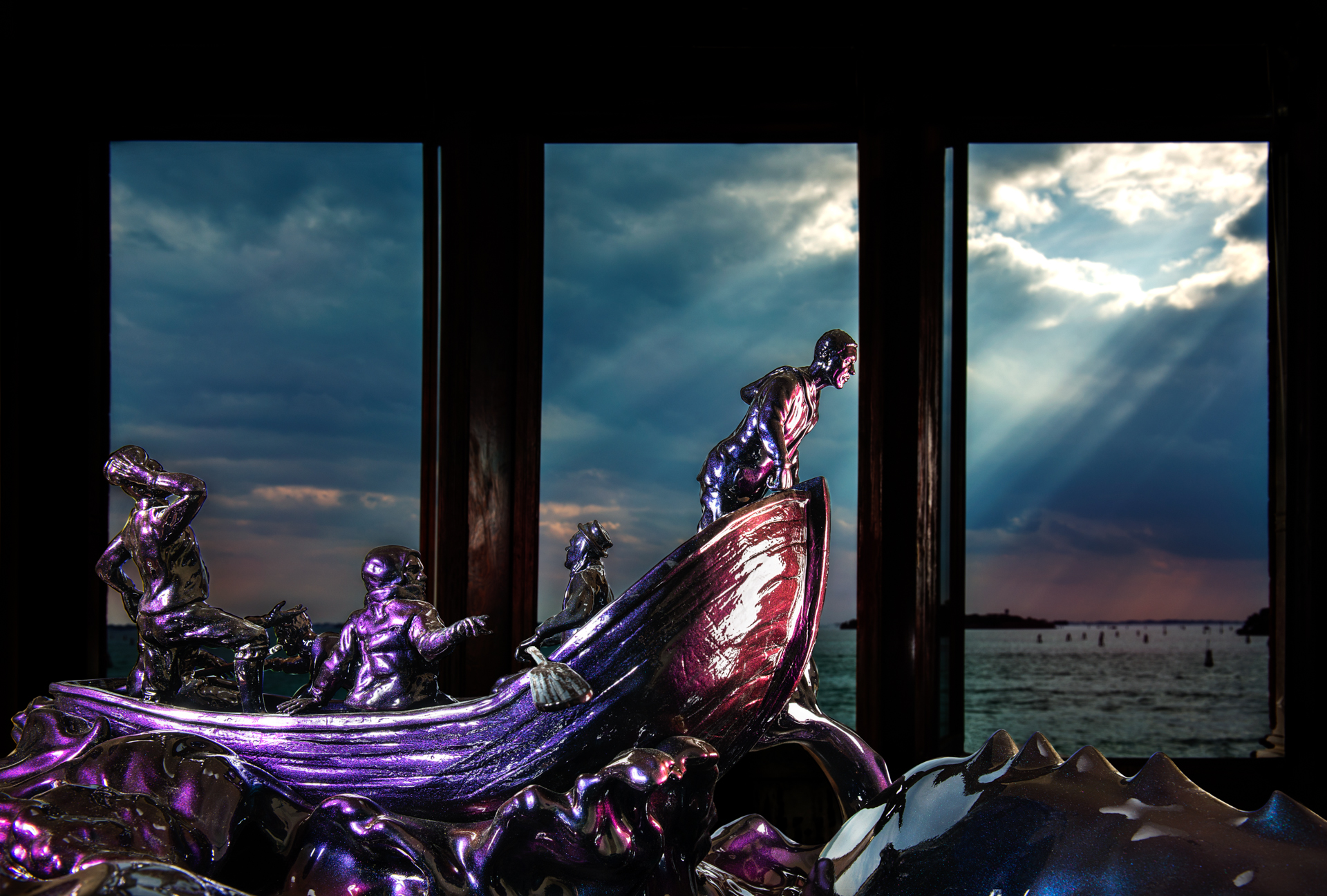Leviathan at Salisbury Cathedral continues Dawood’s multidisciplinary project joining the dots between climate change, migration and mental health
Suspended like banners above our heads in the nave of Salisbury Cathedral are paintings from Shezad Dawood’s Labanof Cycle (2017), each one depicting the possessions of migrants who died attempting the perilous crossing between Tripoli and Lampedusa. Among the objects dredged from the seabed and catalogued at Milan’s Laboratory of Anthropological and Odontological Forensics (Labanof) are passports, photographs, money, jewellery and small cellophane wraps of soil from abandoned homelands. Screenprinted and painted onto luxurious Fortuny fabrics, Dawood’s sketchlike renderings of these items display a lightness of touch that initially belies their solemnity. Labanof Cycle protests against human indifference towards migrant lives, though in the cathedral an uneasy tension arises between the unnamed persons represented by Dawood’s series and the esteemed bishops and noblemen buried in nearby tombs.
With works dispersed throughout the thirteenth-century building, Leviathan continues Dawood’s homonymous multidisciplinary project, which since 2017 has joined the dots between climate change, migration and mental health. In the north transept is AnthropoPangaea (Hapalochlaena lunulata) (2022), a colourful wall-based collage of wools and found fabrics depicting the ancient supercontinent Pangaea. Whereas this suggests an Edenic yearning for a time before nation-states or the industrial exploitation of nature, the latest episodes of Dawood’s ten-part film series, Leviathan Cycle (2017–), propose a speculative future, considering new strategies for living and working after an unspecified ‘cataclysmic solar event’. In the Morning Chapel, Episode 7: Africana, Ken Bugul & Nemo (2022) combines narration, talking-head interviews and shots of Senegalese coastland to imagine Dakar as a model ‘postcapitalist and decolonial society’, where power has been decentralised and Indigenous values reclaimed. In the Trinity Chapel, Episode 8: Cris, Sandra, Papa & Yasmine (2023) blends lush rainforest imagery, animation and Indigenous Guarani creation narratives to envisage a spiritual and ecological journey through Brazil’s Atlantic Forest. The juxtaposition of Indigenous cosmology and the cathedral’s Christian iconography is striking, evoking the Catholic church’s role in the colonisation of South America.

Installed in the magnificent Chapter House, near an original copy of Magna Carta (1215) and interpretive panels explaining the importance of this charter of rights in the evolution of contemporary human rights, is Where do we go now? (2017), a lustrous polychromatic sculpture as open to misinterpretation as the convoluted satire that inspired it. Based on John Sturt’s frontispiece to Jonathan Swift’s A Tale of a Tub (1704) – the story itself a complex response to Thomas Hobbes’s formulation of social-contract theory, Leviathan (1651), wherein the titular biblical beast symbolises the size and power of the state – Dawood’s tableau depicts a ferocious sea monster chasing a barrel that passengers have thrown overboard to distract it from destroying their boat. Replacing eighteenth-century sailors with refugees and a UN rescue worker, the artist perplexingly suggests that their vessel represents a ‘right relationship and community’ and the barrel ‘their labour (or “capital”)’.
Leviathan’s engagement with themes of migration and climate change chime with the Christian virtues of loving your neighbour and caring for the natural world. But in a society where social and climate justice remain contested notions, selfishness and indifference are stubborn sticking points. This is addressed in the exhibition guide, in which Dawood (a confessed agnostic) asks, ‘How can we find new reserves of empathy and understanding?’ This, and his desire to see ‘a new set of ethical standards established for the world’, lays bare the tensions between religious and humanistic beliefs: the former pointing to a sacred transcendence, the latter placing faith in human reason and ingenuity. With the cathedral more a grand backdrop than a space for meaningful exchange between the works and this spiritually charged context, Dawood’s questions are left hanging.
Leviathan at Salisbury Cathedral, through 4 February
